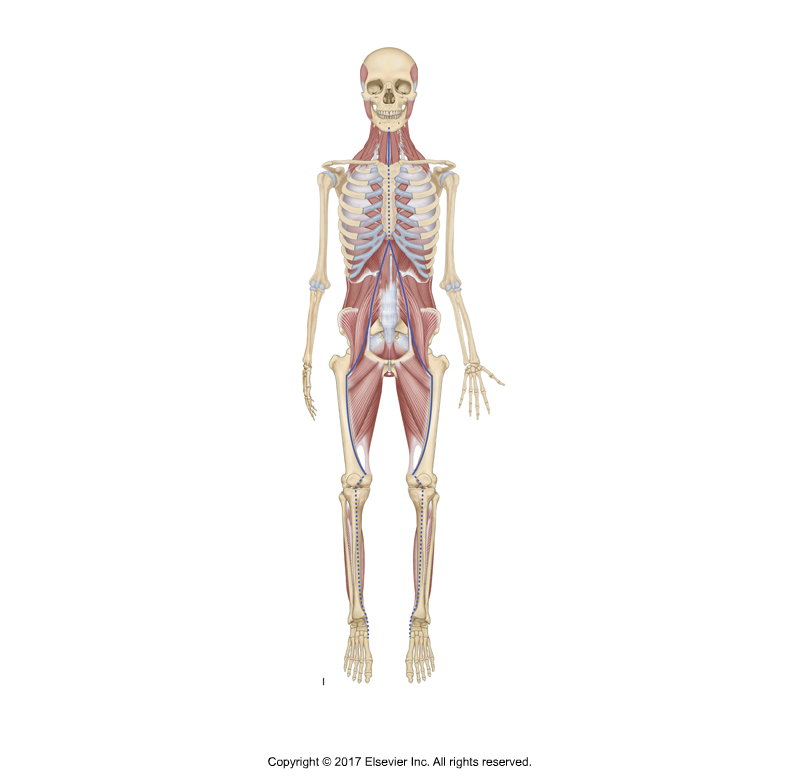Note: This is the tenth blog post article in a series of 11 articles on Psoas Major Function. See below for the other articles in this series on psoas major function.
Before leaving our discussion of the psoas major, its fascial associations should be at least be briefly touched upon. After all, the contraction pull of a muscle will always be exerted into all adjacent tissues, both soft and hard, with which it shares fascial attachments. In addition to the fascial attachments into the spine and femur, the psoas major has been shown to have facial attachments into the iliac fascia (22) as well as directly into the sacroiliac joint and pelvic brim (2, 26). It also interlaces fascially into the diaphragm (23, 26), with potential effects upon breathing, as well as fascial attachments into the fascia and musculature of the pelvic floor (2, 26), with possible ramifications upon pelvic floor dysfunction. Indeed, given that the abdominal cavity is bounded by the diaphragm above and the pelvic floor below, Sajko postulates that its fascial attachments into the diaphragm and pelvic floor allow for the psoas major to have another avenue in which it can stiffen and stabilize the low back (26).
Regarding longer myofascial tensile (pulling) forces exerted throughout the body, the psoas major is part of the deep front line myofascial meridian, which travels from the tibialis posterior to the suprahyoid musculature (Figure 18) (16). Therefore, tension created in the psoas major could be transmitted as far distally as the foot, and as far superiorly as the mandible.

Figure 18. The psoas major is part of the deep front line myofascial meridian. Courtesy Joseph E. Muscolino. Kinesiology – The Skeletal System and Muscle Function, 3rd ed. (2017) Elsevier. Modified from Tom Myers, Anatomy Trains: Myofascial Meridians for Manual and Movement Therapists, 2nd Edition. Churchill Livingstone of Elsevier.
Click here for a list of the cited references.
Note: This is the tenth blog post article in a series of 11 articles on Psoas Major Function.
The 11 articles in the series are:
- Introduction & Muscle Biomechanics
- Biomechanics of the Psoas Major (Overview)
- Psoas Major Hip Joint Actions – Sagittal Plane
- Psoas Major Hip Joint Actions – Frontal Plane
- Psoas Major Hip Joint Actions – Transverse Plane
- Psoas Major Spinal Joint Actions – Frontal and Transverse Planes
- Psoas Major Spinal Joint Actions – Sagittal Plane
- Stabilization of the Spine by the Psoas Major
- Psoas Major and the Sacroiliac Joint
- Psoas Major and Fascial Pulls
- Summary of Psoas Major Function & Further Research
- (References)
Note: This article is modified from an article originally published in the massage therapy journal (mtj): Psoas Major Function: A Biomechanical Examination of the Psoas Major. Spring 2013 issue.


